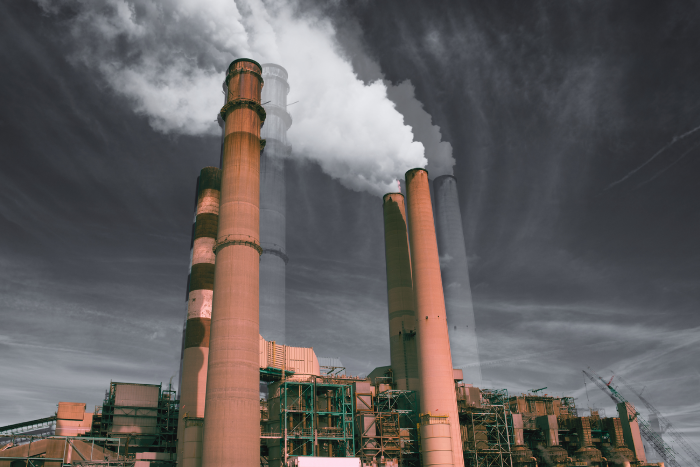Health threats of climate change reach record-breaking levels in India and globally due to delays in adaptation and persistent investments in fossil fuels, says the report
According to the 2024 Report of the Lancet Countdown on Health and Climate Change, 1.6 million death were attributable to anthropogenic air pollution (PM₂.₅) in 2021. Fossil fuels (coal and liquid gas) contributed to 38% of these deaths, the report added.
With 10 out of 15 indicators tracking health threats reaching new records, people in every nation, including India, face unprecedented risks to their life and health as a result of the fast changing climate.
According to the report, people experienced a record-high average of 50 additional days of potentially harmful temperatures in 2023 as a result of climate change. People in formerly unaffected areas are at risk of contracting fatal infectious diseases such as vibriosis, dengue, malaria, and West Nile virus due to the changing climate.
Additionally, it was found that in 2023, 48% of the world’s land area experienced at least one month of severe drought, which is the second-highest percentage since at least 1951. According to the report, the increase in drought and heatwave events since 1981–2010 was in turn associated with 151 million more people experiencing moderate or severe food insecurity across 124 countries assessed in 2022, the highest recorded level.
In India, trends in heat and health emerged as particularly concerning, with populations experiencing increases in exposure to high temperatures, undermining livelihoods and threatening people’s health and wellbeing, the report warned. Climatic conditions have grown increasingly suitable for the spread of vector-borne diseases including dengue and malaria in the country. Air pollution is affecting the health of local populations, with a high burden of disease and deaths that could be avoided by transitioning to zero emission, clean energy sources.
India in focus: Heat, diseases, air pollution and more
The report stated that between 2014 and 2023, the average number of heatwave days experienced by infants and adults over 65 was 7.7 and 8.4 days annually, respectively. These represented increases of 47% and 58%, respectively, over 1990-1999.
Labour productivity is reduced by heat exposure, which jeopardises livelihoods and the social determinants of health. In 2023, an estimated 181 billion potential labour hours were lost as a result of heat exposure, which is 50% more than the yearly average from 1990 to 1999, the report figured. The potential income loss from labour capacity reduction brought on by heat in 2023 was $141 billion. With possible losses of almost US$71.9 billion, the report concluded that the agricultural sector was most impacted in the country.
In 2023, 18.1 million people were living less than 1 metre above sea level in India. Sea level rise can affect human health through episodic flooding, permanent inundation, erosion, soil and drinking water contamination, vector- and water-borne disease, and mental health impacts, with populations living less than 1 metre above sea level particularly vulnerable.
From 2014-2023, the length of coastline with conditions suitable for the transmission of Vibrio pathogens at any one time during the year was 23% greater than in 1990-1999. In these last 10 years, the average annual population living within 100 kilometres from coastal waters with conditions suitable for Vibrio transmission surpassed 210 million
Apart from the deaths due to air pollution, the report said that $320 million is the monetised value of premature mortality due to anthropogenic air pollution in 2021.
Each year from 2014 and 2023, an average of 42.7% of India’s land area experienced at least one month of extreme drought, nearly double what was seen from 1950 to 1960. During the same period, around 25% of India’s land faced drought for three months or more annually, almost 7 times the extent recorded between 1950 and 1960.
The way forward
The report highlighted that countries and companies continue fuelling the fire, reversing the limited progress made so far and exacerbating inequities. Between 2010–2014 and 2019–2023, the average yearly economic losses from weather-related extreme events rose by 23% to US$227 billion, said the report.
The report called for the trillions of dollars spent on bankrolling the fossil fuel industry to be redirected and used to implement a rapid and fair transition to a cleaner energy system and more resilient health infrastructure.
The report recommended targeted interventions to prevent heat exposure and to enhance climate-integrated disease forecasting and surveillance to identify future vector borne disease hotspots, along with allocating financial resources for targeted vector control, public awareness campaigns and community interventions. Strengthening coastal resilience through implementation of the revised Coastal Regulation guidelines and targeted interventions for protection of coastal communities will be beneficial, the report suggested.
Responding to the report, UN Secretary-General, António Guterres said, “Record-high emissions are posing record-breaking threats to our health. We must cure the sickness of climate inaction– by slashing emissions, protecting people from climate extremes, and ending our fossil fuel addiction– to create a fairer, safer, and healthier future for all.”
The report recommended that at COP29, rich countries must come forward and make pledges to a new common financial goal that will support countries of the global south, who are hit hardest by the climate crisis, to adapt to and mitigate the crisis. In order to guarantee that the funding mechanisms maximise the health benefits of climate action, the health sector’s involvement in these processes will be crucial.
About The Author
You may also like
Rise in Fossil Fuel Burning is Making Floods Lethal in Asia
EU to waste billions on hydrogen pipelines in new PCI list, warns experts
Lula Pitches Fossil Fuel Phase-Out at COP30, But Can a Divided World Agree?
Fossil Fuels CO2 Emissions Hit Record in 2025 as Global Carbon Budget Nears Exhaustion
OPEC Predicts 2026 Supply-Demand Balance, Leading to Another Drop in Oil Prices

